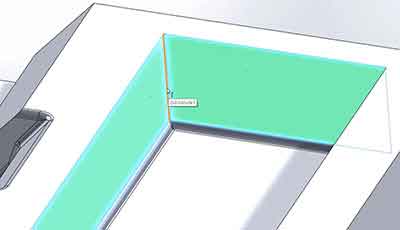Consider the humble hole. It’s nothing—literally. Creatingholes or slots in sheet metal is easy, but doing it the right way requires that you consider three elements of design that you can think of as the Hole-y Trinity. The advantage in getting it right during the design phase is speed. Your request will flow through our system more quickly, from design to quote to completed project.
Element One: How Thickness Affects Holes and Slots
In your designs, it’s important to remember that no hole should be smaller than the sheet metal’s thickness and that the thickness affects how close holes and slots can be to each other. Without that consideration, you risk introducing weakness in the metal. There are also rules about placing holes too close to the edge.
Element Two: Hole Placement in Sheet Metal
As with any design element, placement of your hole or slot is critical. During the design phase, when locating a hole, compensate for bends in your metal by placing holes a strategic distance away. This will help ensure the integrity of the hole.
Element Three: How to Cut Holes and Slots in Sheet Metal
What tolerances will you accept? You can create holes either of two ways: Cutting with a punch or using a laser. The laser method is faster and more accurate, but costs a bit more. The standard brute force hole punch also does the trick, but requires some aftercare to remove burr—the metal that was not cleanly cut off the sheet. This extends lead time.
The Hole-y Trinity in Action
Spend two minutes with this video and find out how understanding sheet metal’s Hole-y Trinity will help you get your product faster.
For more details, download our Design for Manufacturing (DFM) Guide.





